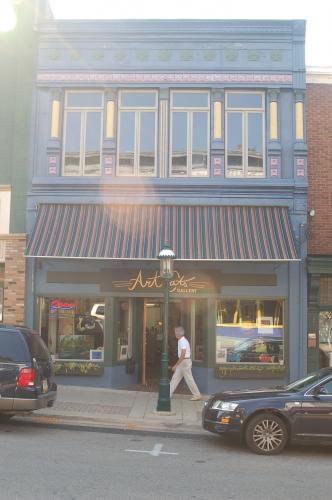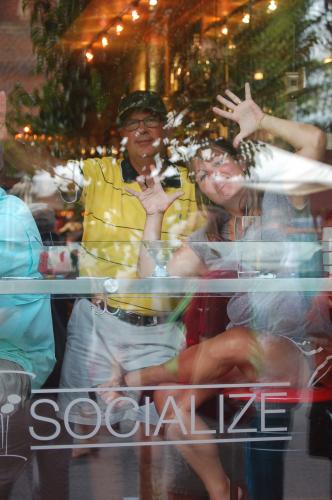Parking meters and evening hours can increase downtown retail shopping
Putting in parking meters and keeping stores open in the evening hours were two of many techniques for increasing commerce.
“Small downtowns should put in parking meters,” Robert Gibbs, ASLA, said. Retail establishments should also be open evenings he said at the Michigan Association of Planning (MAP) annual conference.
Gibbs’ presentation was on “Proven Techniques for Increasing Commerce in Michigan Towns, Cities & New Town Centers” at the MAP conference in Kalamazoo, Mich. Many of his comments were based on his book Principles of Urban Retail Planning and Development. Gibbs is a recognized leader in the real estate industry and known internationally for retail development. His firm, Gibbs Planning Group, is one of the foremost urban retail planning consultancies in America.
“Seventy-five percent of sales are done after 5:30 p.m.” Gibbs said. The landscape of retail sales has changed in the past decade. Today one has predominantly two-income families or single-parent households. That means customers often can only shop after 5 p.m. A retail store that closes during evenings is writing-off three quarters of its potential business. Also, the shopper wants to park very close to the store.
“The parking meter does not prevent shoppers,” Gibbs said. “Meters get cars to move several times a day.” That turnover translates into more customers for retail stores. On average, the parking meter generate retail sales of $50,000 per meter per year.
Other points made during his presentation include:
- Any shopping area or downtown that has over 30,000 square feet must be anchored. An anchor store or some other function must be a part of such an area. Examples include a supermarket, post office, major museum, library or a large name-brand retail store.
- Allow major name-brands in a shopping area. National brands are a major draw, an anchor store in function, especially for those shoppers that do not have a lot of time: tourists. National brands also have the budget to do a good job at advertising and bringing in shoppers to a retail district. Once shoppers are there, local retailers can work to capture those shoppers to enter their stores. Ideally, limit national chain stores to 30 percent of the overall mix.
- There needs to be coordination in a retail area, or town center. Coordination such as common hours, street frontage presence (an urban setting), window displays and so on.
- A retail center should be authentic, capitalizing on local history, flavor and character. Fake façades and similar treatments can be harmful.
- Small retail cannot afford major advertising budgets, so they depend on visibility and parking within sight of the store. Thus don’t create streetscape which blocks views to the entrance and signage for a store. For example, street trees, if any, should be located between store entrances, not in front of the store entrance or signs.
- Parking for a downtown should always be within one block of stores.
- Allow plentiful small signs, they can be tasteful, or required to fit the community character or décor, but need to be allowed in sufficient number to provide retailing information.
- A downtown retail district needs to have stores which sell things people need, such as staples, not just items which are discretionary purchases.
- Window displays have a job to do within about two to four seconds. It takes an average walker about eight seconds to walk by a store. That means four seconds to walk half the distance past window displays to the front door. In that four seconds the window display needs to pull the shopper into the store. That also means the road and streetscape should not create distractions that might pull one’s attention away from the store window. Thus, strive for a simple streetscape, clean lines of sight and so on.
- A shopping area, or downtown, does need to have design standards and a local government with the backbone to enforce compliance with those standards.
- The municipality should buy moderately-priced but attractive street furniture, and replace it every ten years.
- Do not put clocks in shopping areas or downtown – one does not want to remind shoppers it is time to leave.
- A plain, simple sidewalk, rather than ornamental design, is better. Also important is for the sidewalk to be clean. The idea is to minimize distractions.
- Do not have stairs along the street, or require visitors to climb stairs to enter a building.
Gibbs concluded by pointing out there will be a resurgence of some downtowns, as more and more retailers want to be in downtowns. But following these and other techniques can enhance a shopping area’s success. For more information and details see Gibb’s book Principles of Urban Retail Planning and Development. Also Michigan State University Extension has additional articles on retail, downtowns, and economic development. Finally MSU Extension is a major partner in the state’s Placemaking Initiative, MiPlace.org with training programs on these and other topics.



 Print
Print Email
Email






